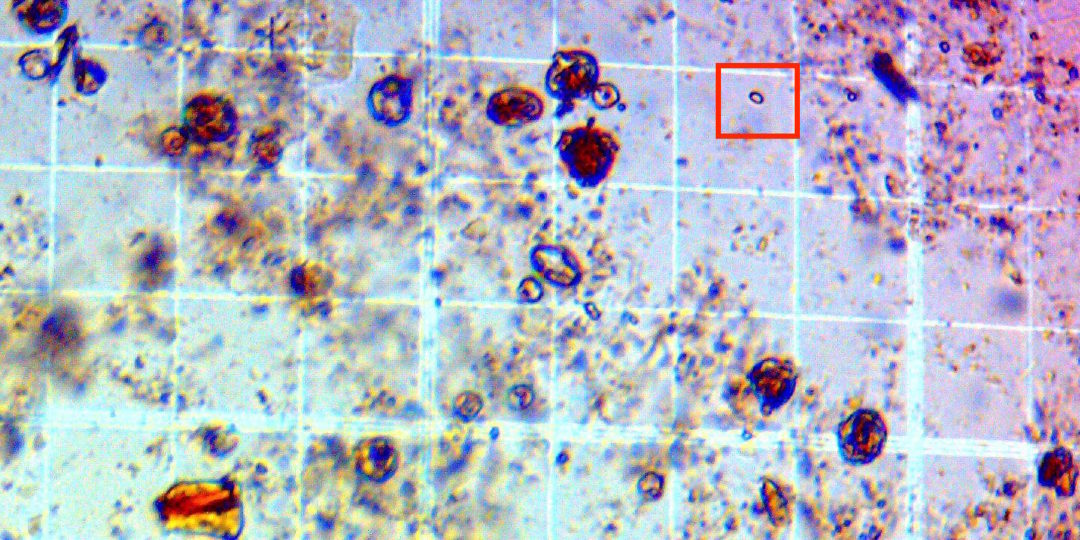Nosema’s Impact on Honeybee Colony Health
by Becky Cohn

Honeybees are essential to our food supply as a major pollinator species. Unfortunately, colony health is threatened by many factors including pesticides, diseases, and mites. Among these threats is the fungus Nosema ceranae. If a honeybee eats the spores of this fungus, it will reproduce inside the cells of the bee’s digestive system. As the spores multiply, they are also spread into the environment or the hive as the bee defecates. This is how the spores are passed to other bees in a colony, and the fungus spreads.
Mike Goblirsch, Zachary Huang, and Marla Spivak studied the physiological and behavioral changes in honeybees caused by a N. ceranae infection. The team monitored two different substances in their experiment. One was vitellogenin (Vg), which is a protein found in egg yolk. The other was an endocrine factor known as juvenile hormone (JH). The balance of Vg and JH in a honeybee help regulate how the worker bee ages.
A typical worker bee will spend the first three weeks of her life as a nurse bee. She will remain in the hive and help feed the larvae that the queen lays. The last two or three weeks of the worker bee’s life will be spent as a forager. She will either scout out where the blooming flowers are, or she will collect pollen and nectar to bring back to the hive. A nurse bee has high levels of Vg and low levels of JH, while a forager bee has high levels of JH and low levels of Vg.
The amount of Vg and JH within a honeybee interact to regulate how fast the bee ages. This allows the colony population to be flexible. For example, if a windstorm blew away many foragers from the colony, some nurse bees could shift roles and become foragers ahead of schedule. This would provide the colony with new foragers who would bring food back to the hive.
Impacts of Nosema infection
Goblirsch, Huang, and Spivak studied bees they inoculated with N. ceranae and found that the levels of Vg and JH change abnormally in infected bees. Over time, Vg increased in infected bees and decreased in healthy bees. JH decreased in infected bees when it did not change significantly in healthy bees as they aged. This unbalance in Vg and JH in infected bees could damage the flexibility of the worker bee’s life cycle. Without this flexibility, a colony is less adaptable to changing environmental situations and becomes more vulnerable.
The normal change in the balance of Vg and JH happens when worker bees switch from nurses to foragers. The team observed hives to see whether infected bees would begin to forage earlier. They observed that there were more infected early foragers than healthy ones. If a widespread N. ceranae infection causes many worker bees to forage early, there may not be enough nurse bees left in the hive to take care of the next generation of larvae. This could lead to a decline in colony health.
The team also tested whether N. ceranae infection affected the lifespan of worker bees. They found that on average, a healthy bee will live nine days longer than an infected bee. If only a few bees in a colony are infected, this is not a problem. Bees that die too early are quickly replaced, as the queen lays many eggs. If an infection is widespread, however, the situation becomes more serious. If many bees are dying too early, a queen may not be able to keep up the colony’s population. Also, as foragers die, there is less food being brought back to the hive. This further damages the colony’s health.
What can we do?
This study showed that a widespread infection of Nosema ceranae in a honeybee hive could shorten lifespans and lower adaptability of the colony. To protect against Nosema spp. infections, beekeepers can sanitize equipment with an isopropanol solution before reuse. Also, nutritional supplements containing thymol (a chemical found in thyme) can be added to sugar water to improve honeybee fungal resistance.
At the Urban Beekeeping Laboratory and Bee Sanctuary, we test field samples for the presence of Nosema spp. Cases of these infections are common among our sample base and are a growing cause for concern when studying honeybee health. Our affiliated organization, The Best Bees Company, uses a thymol-based nutritional supplement when feeding client hives to help combat Nosema spp. infections.
The paper referenced above is available in full from PLOS One here.
Becky Cohn is second-season beekeeper and full-time employee of our affiliate, The Best Bees Company. She is also involved with our research efforts here at the UBL. Becky graduated from Northeastern University with a degree in Environmental Science, and is particularly interested in botany.